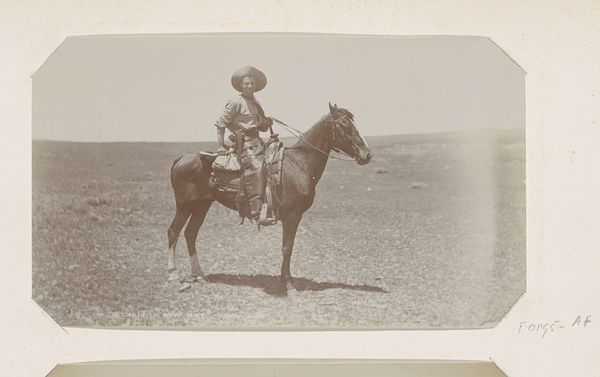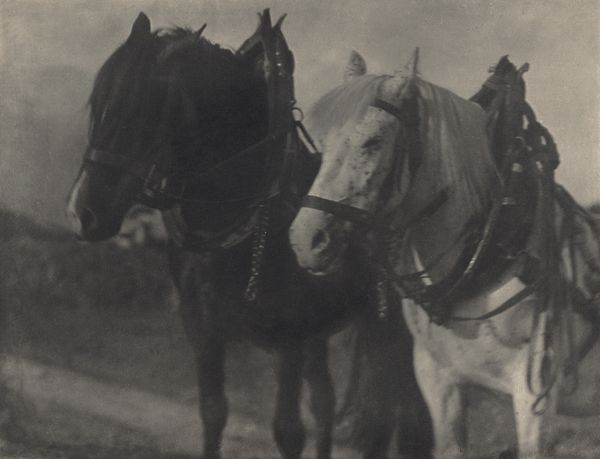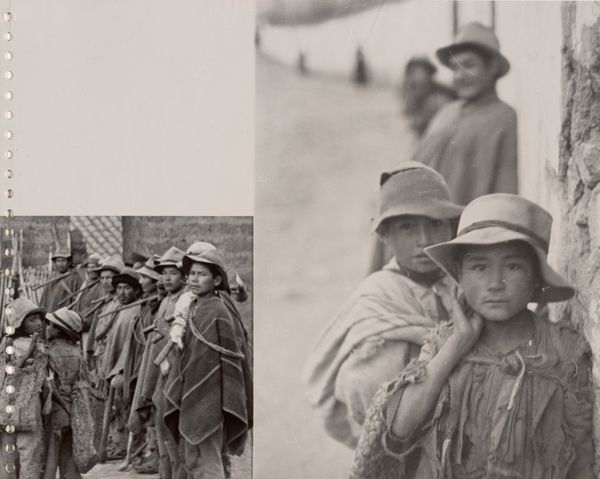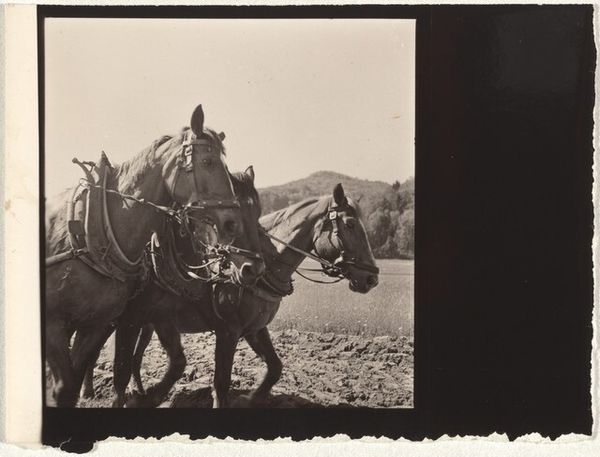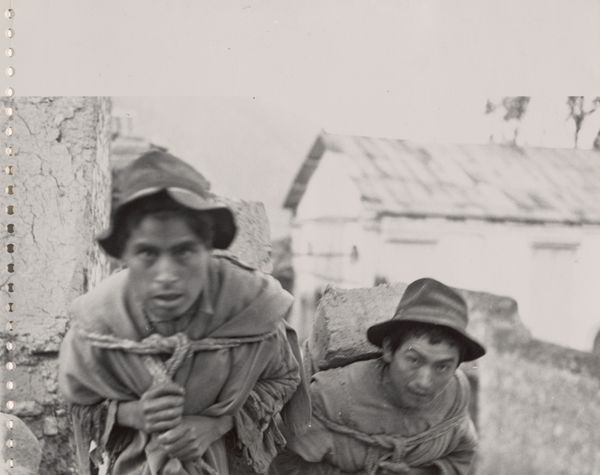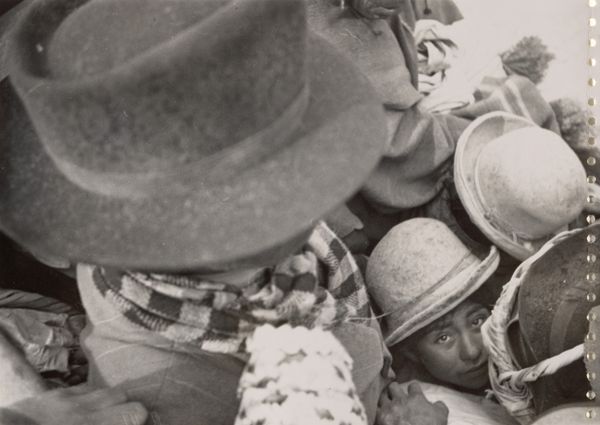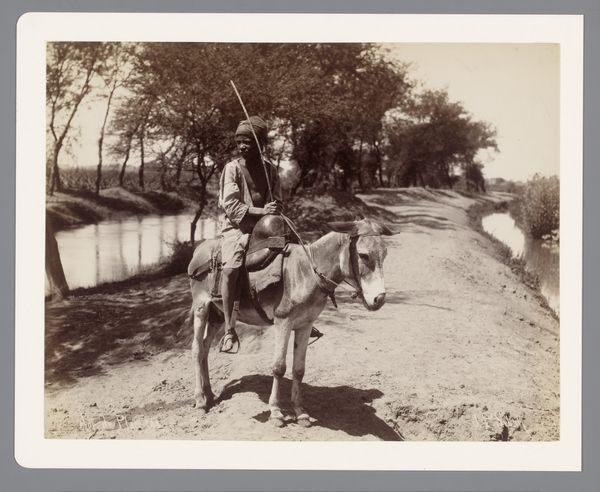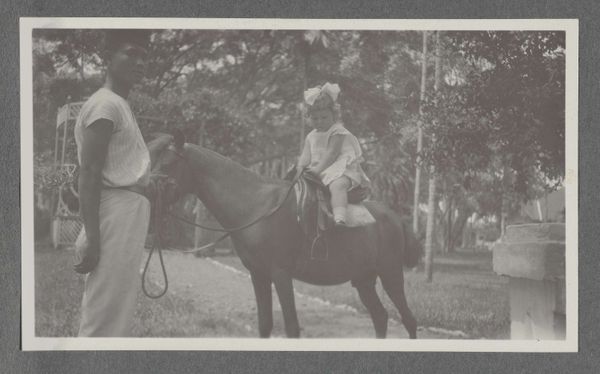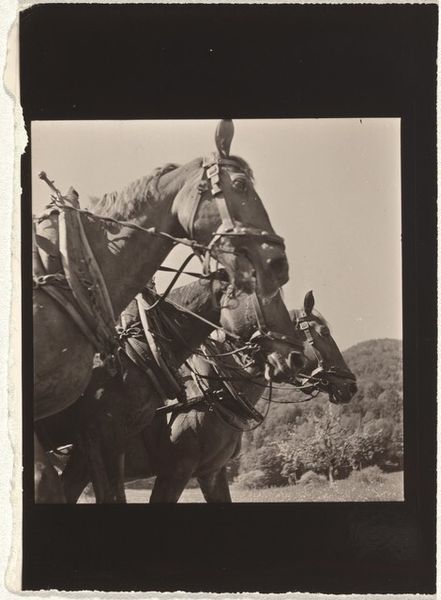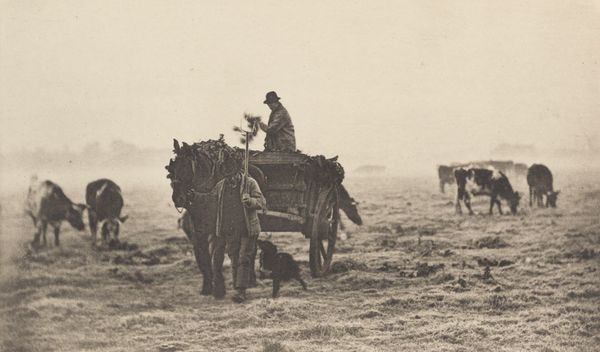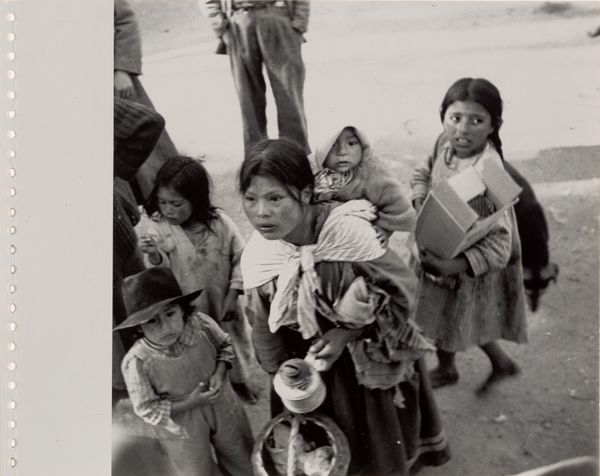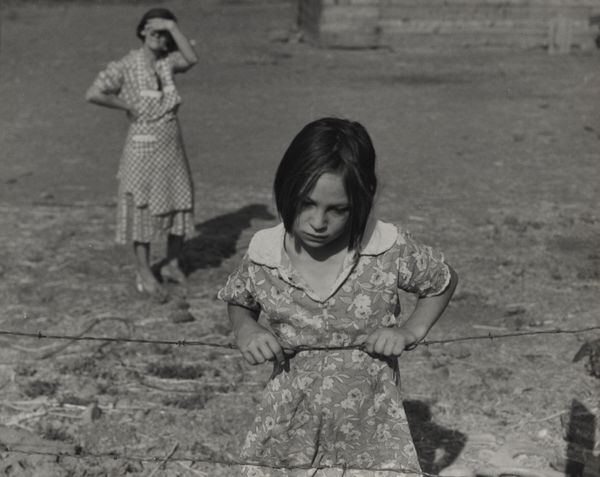
Copyright: National Gallery of Art: CC0 1.0
Editor: We’re looking at Robert Frank’s "Peru, page 15," a gelatin silver print from 1948. I’m immediately struck by the weariness etched on the child's face and the patient stillness of the donkey. It feels like a portrait of resilience in a harsh landscape. What do you see in this image? Curator: This image is fascinating as a tableau of ancient partnership. The child and the donkey are yoked together in labour. The ropes, the landscape, the hats...consider how these repeated circles, softened and weathered, evoke cultural memory – particularly, the indigenous cultures that have long been defined by a cyclical existence, deeply connected to the land and its rhythms. Editor: So, you're saying these circular forms create a symbolic echo of history? Curator: Exactly. And consider how the monochrome flattens the depth of field, creating an immediacy. The subjects appear timeless, almost like figures in an ancient frieze. Are we meant to think about enduring connections to the land? How might the boy's gaze, directed outward, inform our understanding of that link between people, labor, and their landscape? Editor: The gaze definitely makes it personal, like he’s inviting us to share in their reality. The contrast between the child's weariness and the donkey's stoicism is pretty profound, now that you mention it. I’m now wondering what came first, Frank's decision to use monochrome, or was it decided for him as the photo's context gradually emerged? Curator: That tension—between personal expression and enduring archetype—is precisely where the image’s power lies. And the power of an artist's vision to distill meaning! Editor: Thanks! I think I have a better grasp on it now. This really brings new dimension to our understanding and deep appreciation of the artwork!
Comments
No comments
Be the first to comment and join the conversation on the ultimate creative platform.
